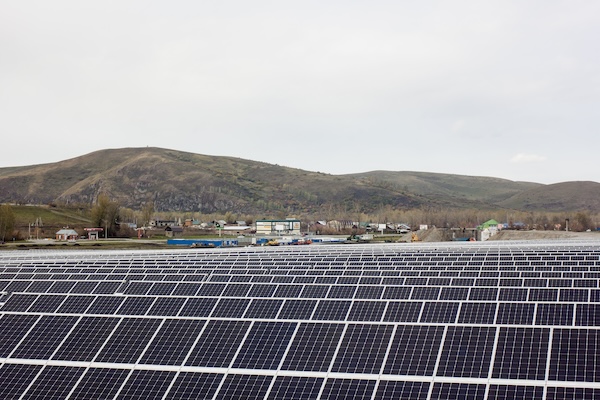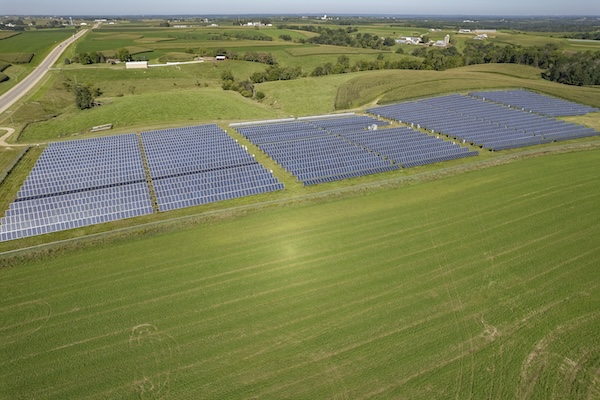Goldilocks and Community Solar State Regulations: How to best protect consumers
Just as Goldilocks spent her afternoon searching for something that was “just right,” state regulators must develop consumer protections for community solar that are neither too hot nor too cold. Burgeoning community solar programs can be undermined by miscalculated guidelines and restrictions. How do we identify protections and practices that protect consumers’ rights while also creating an environment that allows interested subscribers to easily enroll in available community solar projects?
In recent years, some states have developed community solar programs with well-intended but flawed consumer protection rules, creating unnecessary frictions for subscribers. These excess consumer protections — which, in many cases, are a reaction to historical bad actors in the retail supply and rooftop solar market — have unintentionally spawned an unkind ecosystem for interested community solar participants. The root of this is understandable, as previous retail energy suppliers and some rooftop installers have misrepresented themselves to consumers, burdening them with unexpected upfront costs, underperforming equipment, or escalating rates that result in higher energy costs compared to bundled utility supply.
Let’s be clear: Community solar is not retail energy supply, and it is not rooftop solar. Generally speaking, community solar subscriptions require no upfront cost, deliver guaranteed savings, and are flexible, with the ability to cancel with a 60-day notice. Community solar is inherently low risk to the subscriber, and the consumer protection rules should appreciate this.
So, how do we find a consumer protection approach that is “just right?”

Too Hot = Too many hoops to jump through
In states like Illinois, the consumer protection pendulum has swung too far. In the name of guarding consumers, the system requires interested customers to navigate a disjointed and digital-only enrollment process that aggravates both subscribers and the community solar providers that serve them.
Illinois requires interested subscribers to first execute a unique, online-only disclosure form (DF). This DF creation process presents material barriers to households without computer access or technical savvy. In fact, if you are a subscriber who doesn't have an email address, like many seniors, you need to sign an additional form representing as much.
Additionally, the DF requires community solar providers to set the subscriber’s allocation in the form, leaving no way to update the subscriber’s allotment without executing a new DF. This means that if a subscriber were to increase or decrease their energy usage, the manager couldn’t adjust their allocation to optimize savings without repeating the cumbersome DF process.
Community solar programs are meant to be flexible to adapt to the changes of the subscriber’s dynamic usage. But when you apply strict consumer protection rules without an appreciation for the product itself, you end up protecting against a small theoretical risk at the cost of the significant real benefits the program delivers.
Too Cold = Protecting against the wrong risks
In general, Massachusetts has taken a more sensible approach to consumer protection in its community solar program. However, in some cases, the Massachusetts Department of Energy Resources (“DOER”) has erroneously focused on topics that don’t have a real impact on consumers, while neglecting true consumer protection risks.
At the end of last year, DOER required that customer savings estimates and subscription sizes be explicitly provided in the disclosure form. Given that a subscriber’s initial allocation is calculated based on their historic usage, and over time that allocation will undoubtedly adjust based on the subscriber’s usage, their actual savings will change from what is reported on the form. While these aren’t unreasonable requirements, it's not where there needs to be real improvement in consumer protection.
Rather, DOER should focus on reconciling the inconsistency in how its SMART (Solar Massachusetts Renewable Target) incentive program is implemented in community solar across utilities. For example, one provider provides grossly inadequate data to subscriber organizations to properly manage accounts. Further, it prohibits the submission of an allocation schedule below 100 percent, so if a subscriber cancels without having an immediate replacement, the cancelled subscriber is forced to remain on the project until the community solar provider finds a replacement account. In comparison, another provider provides a robust monthly report with complete subscriber-level details, and accepts allocation schedules below 100 percent (but not less than 90 percent), which eases the process for departing users. Without these advantages, the burden and risk shifts onto the unwitting subscriber, causing a real consumer protection risk that should be prioritized.

Just Right
New York’s community solar program rules strike that “just right” balance between consumer protection and ease of participation. New York has created a regulatory framework where community solar providers must register with the NYS regulators and commit to following Uniform Best Practices for Distributed Energy Resource Suppliers. These rules include requirements on how community solar can be marketed, the use of a disclosure form to dictate the key terms of the subscriber agreement, and annual reporting on any complaints and banked credits. Outside of that, New York has allowed its market participants to act freely in the engagement and enrollment of subscribers.
Disclosure forms can be printed and signed alongside subscriber agreements, and allocations for subscribers can easily be adjusted to adapt to their changing usage patterns. These are all features that improve consumer experience. When bad actors are identified, they are subject to punishments laid out in the program rules and procedural documents. The rules in New York protect consumers without creating unnecessary friction in participation, fostering a successful and well-functioning market.
Effective community solar programs have the potential to strengthen public support for renewables across the board. Goldilocks and all three bears can and should benefit. If residents have positive experiences with their own retail energy engagements, then it follows that they would be more likely to support broad clean energy development. However, ill-developed consumer protection policies in many states are currently hurting the consumer populations they are aiming to help. Renewable energy leaders, both in and out of community solar, must come together to advocate for a functional regulatory environment that promotes the responsible growth of community solar for all.
Jason Kaplan is Chief Operating Officer and General Counsel at PowerMarket, a clean energy solutions provider that delivers turn-key acquisition, management, billing, and support services to developers, financiers, and the incumbent energy industry. In his role, Kaplan is responsible for growing the company’s community solar business, managing its legal affairs, ensuring success for its community solar partners, and building the company culture. Today, PowerMarket supports over 400 community solar projects across 11 states, representing 800 MW of capacity, and more than 75,000 subscribers.
PowerMarket | powermarket.io
Author: Jason Kaplan
Volume: 2024 July/August












